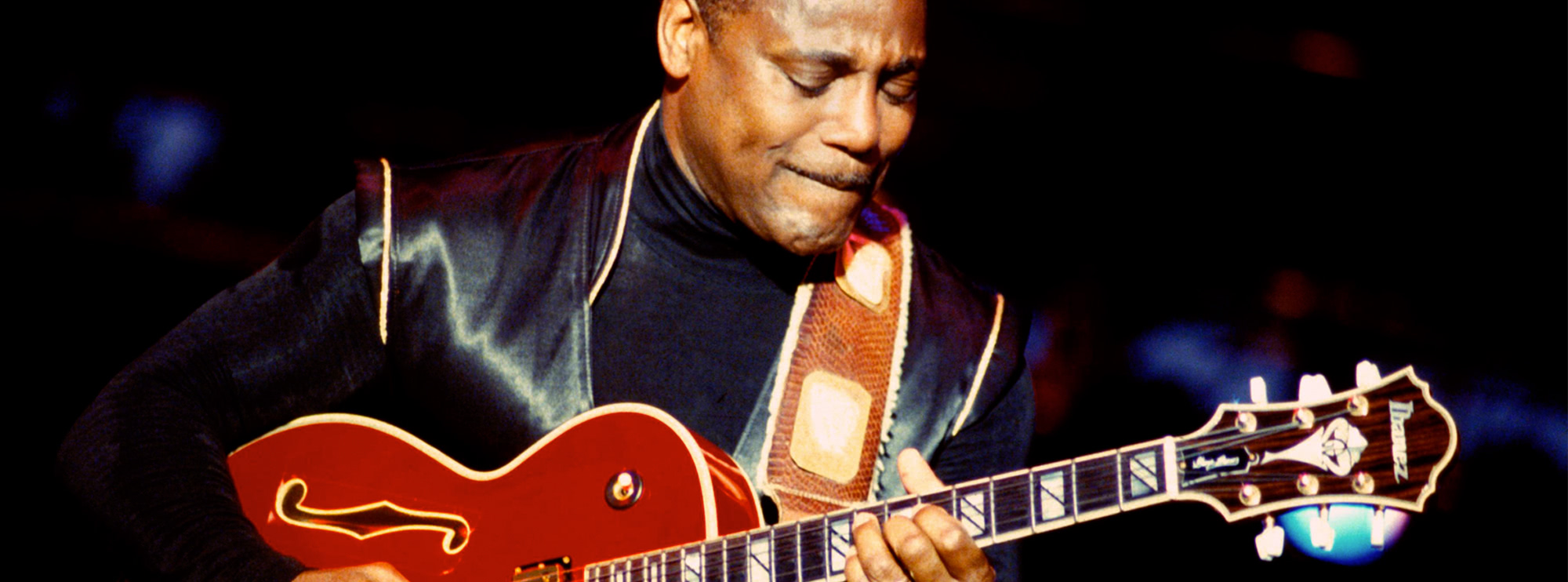Appetite For Destruction by Guns N Roses: A guitarist's perspective
Guitar lessons by Danny Gill
Guns N Roses' groundbreaking album "Appetite for Destruction" has left an indelible mark on rock music history. From the aggressive punch of opener Welcome to the Jungle to the soaring leads on Rocket Queen, Slash managed to show the world that it’s possible to have a record that’s flawless from start to finish.
In this course, LickLibrary veteran, Danny Gill walks you through the many highlights of each song from the heavy metal icons one phrase at a time, including all of Slash’s legendary guitar parts from the tracks; “Welcome to the Jungle,” “Paradise City,” and the anthemic, “Sweet Child O Mine.” This is a unique opportunity to be able to go out and play these songs live, fast. This article will dissect each song from a guitarist's standpoint, delving into the scales, solos, and techniques employed throughout the album. Furthermore, we will discuss the lead guitarist's contribution and provide a list of guitar techniques featured on the album.
Track-by-Track Analysis
Track 1: Welcome to the Jungle
Welcome to the Jungle starts with a chilling, delayed guitar riff in the key of E minor. The song features a driving chord progression utilizing power chords and palm muting. The guitar solo showcases Slash's signature bluesy bends and vibrato, as well as his impressive use of double stops and slides.
Track 2: It's So Easy
It's So Easy is a hard-rocking tune in the key of D, employing the D Mixolydian mode. The guitar work features syncopated rhythms and power chords, giving the song its driving, aggressive feel. The solo incorporates double-stops and hammer-ons, providing a melodic yet straightforward approach.
Track 3: Nightrain
Nightrain is an energetic rock song in the key of A minor, featuring the A Dorian scale. The rhythm guitar work showcases power chords and palm muting, while the lead guitar offers a memorable solo filled with string bending, trills, and alternate picking techniques.
Track 4: Out Ta Get Me
This hard-hitting track in the key of E minor showcases a mix of power chords and barre chords, with the rhythm guitar utilizing palm muting to create a heavy groove. The solo incorporates chromaticism, pull-offs, and slides, offering a powerful, aggressive feel.
Track 5: Mr. Brownstone
Mr. Brownstone, a funky rocker in the key of G minor, employs the G Dorian scale. The rhythm guitar features a mix of power chords and syncopated rhythms, while the lead guitar dazzles with its use of hammer-ons, pull-offs, and bluesy bends.
Track 6: Paradise City
This iconic track in the key of G major showcases an uplifting chord progression and galloping rhythms. The guitar solo features a mix of legato runs, sweep-picked arpeggios, and unison bends, highlighting Slash's versatility and technical prowess.
Track 7: My Michelle
My Michelle is a heavy rock song in the key of B minor, utilising the B Aeolian scale. The rhythm guitar employs power chords and syncopated rhythms, while the lead guitar provides a solo packed with alternate picking, trills, and pinch harmonics.
Track 8: Think About You
This melodic track in the key of C# major features arpeggiated chord progressions and a catchy, octave-based melody. The guitar solo showcases Slash's melodic sensibilities through the use of slides, bends, and vibrato.
Track 9: Sweet Child o' Mine
Sweet Child o' Mine, one of Guns N Roses' most iconic songs, is in the key of D major. The song features a memorable opening riff using harmonics and a beautiful chord progression. The guitar solo is a masterpiece of melodic phrasing, incorporating string bending, vibrato, and legato techniques.
Track 10: You're Crazy
You're Crazy is a fast-paced rock song in the key of G major, employing the G Mixolydian mode. The rhythm guitar utilizes power chords and palm muting, while the lead guitar's solo showcases rapid alternate picking, hammer-ons, and pull-offs.
Track 11: Anything Goes
This high-energy track in the key of A major features the A Mixolydian scale and showcases a mix of power chords and open-string riffs. The lead guitar's solo includes a combination of bluesy bends, slides, and rapid-fire alternate picking, demonstrating Slash's ability to create memorable solos with a unique flair.
Track 12: Rocket Queen
Rocket Queen, the final track on the album, is in the key of D minor, utilising the D Dorian scale. The rhythm guitar features a combination of power chords, palm muting, and syncopated rhythms, creating a driving groove. The guitar solo is a testament to Slash's melodic prowess and technical skills, incorporating legato runs, sweep picking, and harmonics.
Lead Guitarist: Slash
Slash's contributions to "Appetite for Destruction" are nothing short of iconic, leaving an indelible mark on the history of rock music. As the lead guitarist, his unique blend of technical skill, raw emotion, and melodic sensibility elevated Guns N Roses' music to new heights. Throughout the album, Slash showcased his virtuosity by employing a wide range of guitar techniques, such as bluesy bends, vibrato, alternate picking, and string bending, which have inspired countless guitarists worldwide.
His memorable riffs and solos in songs like "Sweet Child o' Mine," "Welcome to the Jungle," and "Paradise City" are testaments to his ability to create hooks that resonate with listeners while challenging guitarists to replicate his playing. With his iconic Les Paul guitar and top hat, Slash's image and guitar work on "Appetite for Destruction" have become synonymous with the late 80s rock music scene. Ultimately, Slash's contributions to the album played a crucial role in Guns N Roses' meteoric rise to fame and their lasting legacy in the world of rock music.
By examining "Appetite for Destruction" through a guitarist's lens, it becomes clear why this album has had such a profound impact on rock music and guitar players alike. The intricate combination of techniques, scales, and melodic ideas showcases the remarkable talent and creativity of Guns N Roses, particularly lead guitarist Slash.
From the unforgettable riffs to the emotionally charged solos, "Appetite for Destruction" is a masterclass in guitar playing that continues to inspire and challenge guitarists around the world. By delving into each song's guitar work and understanding the techniques employed, guitarists can gain a deeper appreciation for the album and its significance in rock music history.
In conclusion, "Appetite for Destruction" is not only an iconic album but also a treasure trove of guitar techniques and inspiration for musicians. Whether you're a beginner or an experienced guitarist, studying the guitar work on this album can provide valuable insights and help elevate your playing to new heights.
Guitar Techniques Used in "Appetite for Destruction"
Below is a list of guitar techniques used throughout the album "Appetite for Destruction." Each technique is linked to a comprehensive explanation to help guitarists understand and appreciate the intricacies of Guns N Roses' guitar work:
- Vibrato
- Alternate Picking
- Legato
- Double Stops
- Unison Bends
- Trills
- Power Chords
- Palm Muting
- Barre Chords
- Hammer-Ons
- Pull-Offs
- Slides
- Sustain
- String Bending
- Syncopated Rhythms
- Open-String Riffs
- Bluesy Bends
- Octave Melodies
- Chromaticism

About The Tutor
Tutor Profile
Danny Gill
Danny Gill is, without a doubt, the most loved tutor by our community. With an incredible array of DVDs and web lessons for LickLibrary covering a wide variety of topics all of which he covers with incredible detail, it's no wonder he carries as much respect as he does. As...



